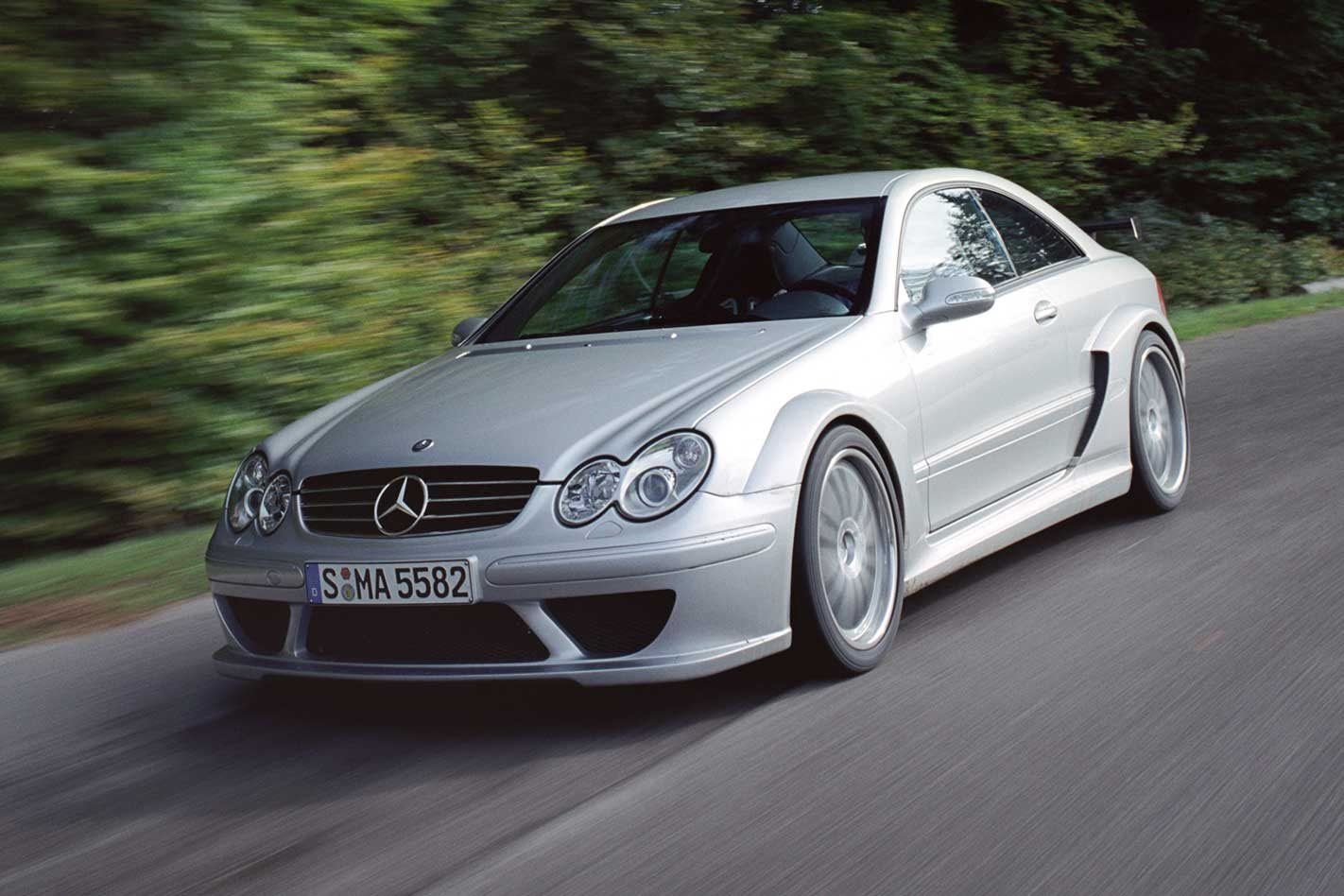Poker-faced, the AMG PR man handed over the keys. Then, as if somebody had suddenly changed the voltage that governed the play of his features, he smiled. In a heavily German-flavoured drawl, he said: “I hope you carry a booklet of driving licence vouchers – you may need them”.
This feature was originally published in MOTOR’s February 2005 issue
I looked at the key ring in my palm, a heavy silver lozenge with a black-and-yellow plastic label attached to it. It said: WARNING, LIMITED ADHESION IN THE WET.
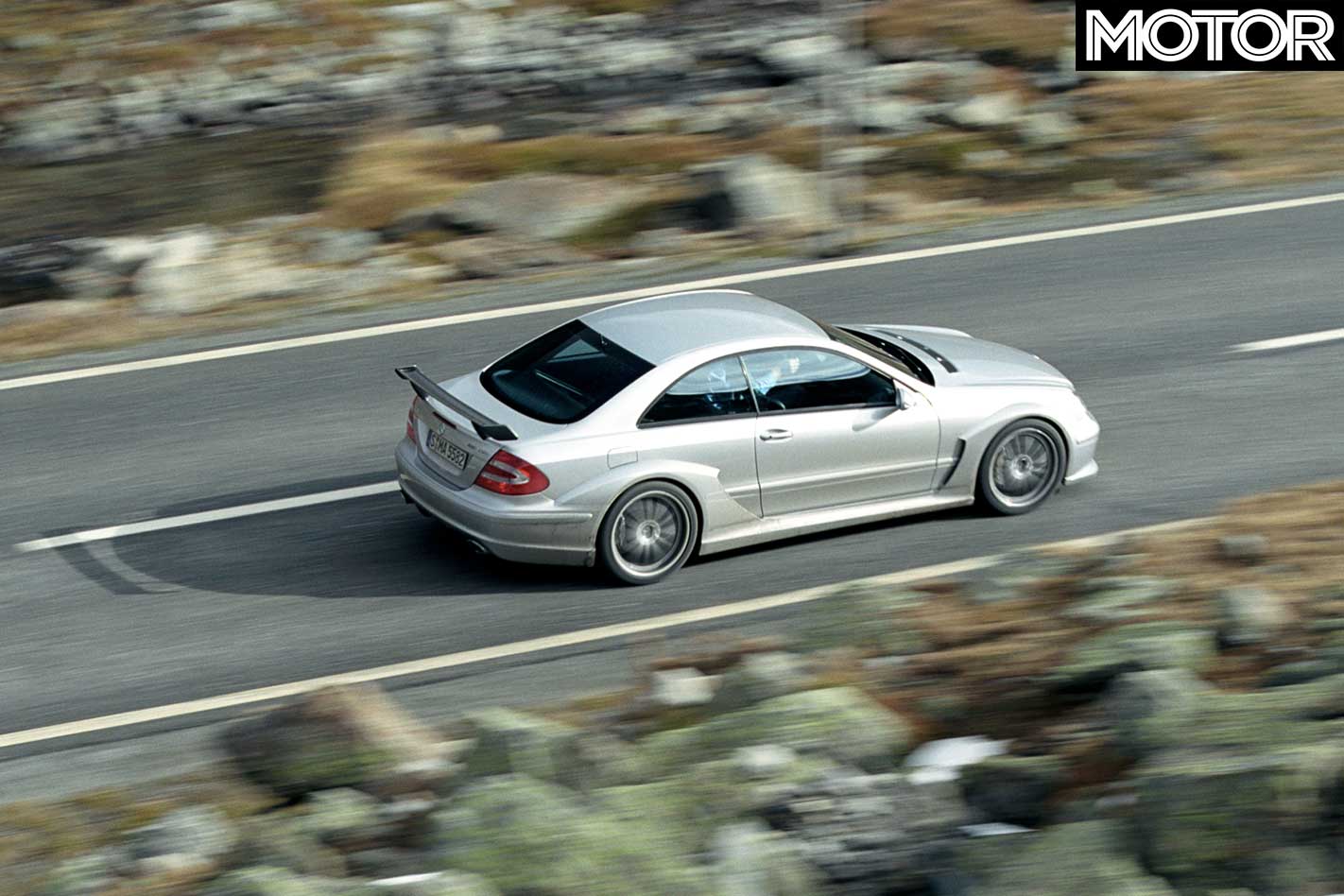
Disconcertingly, the first eight minutes were spent adjusting the Kacher frame to the bucket seat, or rather vice versa.
The CLK DTM AMG offers plenty of legroom, and the widest of three available Kevlar cocoons is just large enough to act as a suede-trimmed suction cup for my behind. But the five-point seat belt is something else. The tight shoulder straps and the short lap belts are a cinch, but the massive centre buckle that juts up between your legs, making a pancake out of your wedding tackle, tells you you’re in something serious.
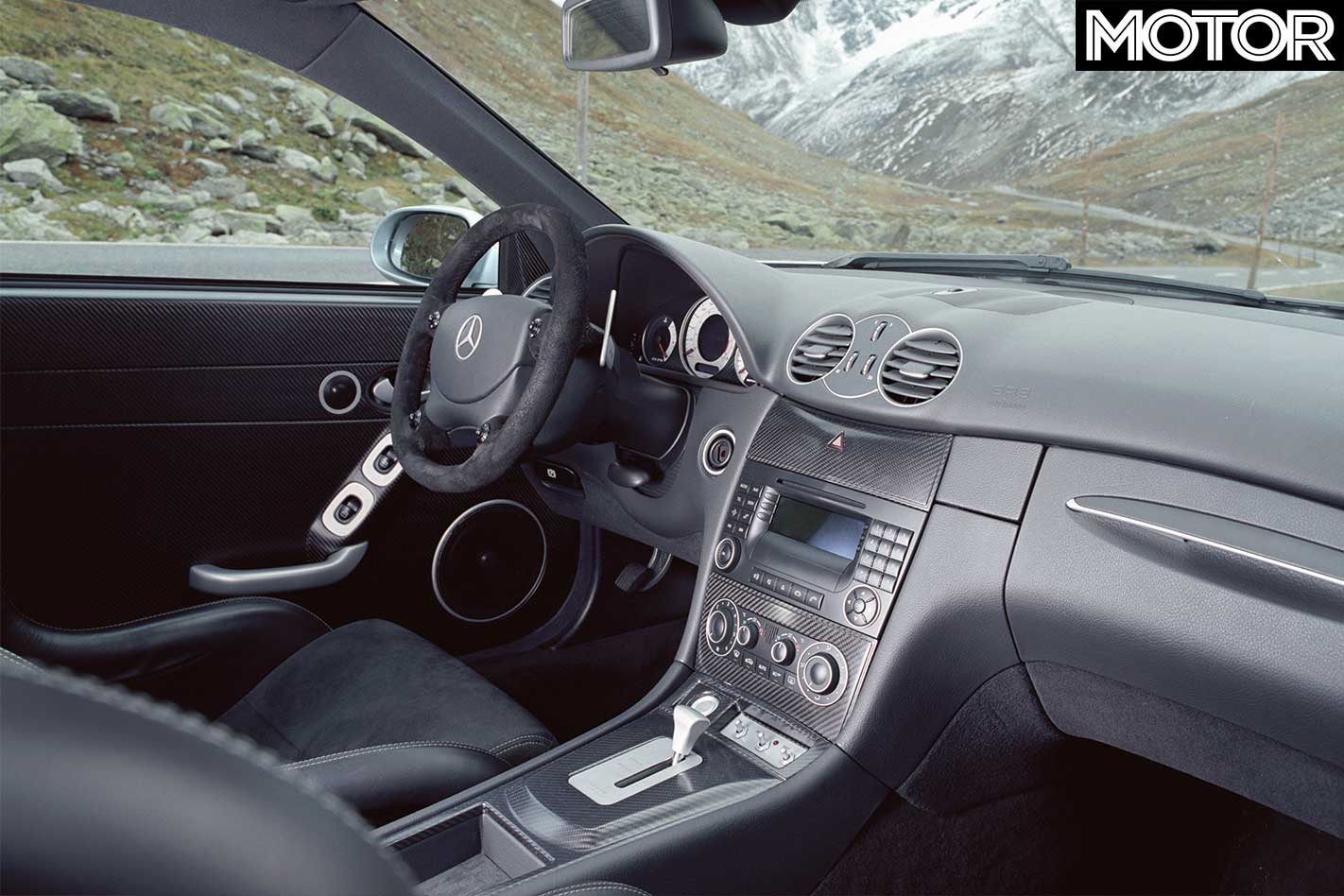
The cockpit of the 428kW Benz is true to the badge on the bootlid: it combines elements of the stock CLK (the dashboard) with the DTM racer (the carbon-fibre environment) and the AMG boutique (the trimmings).
To start the engine, you can either turn the key or hit a button above the stubby aluminium gear selector. What follows is a dense and intimate mechanical experience, the ultimate fusion of noise, vibration and harshness – but not the kind manufacturers spend millions trying to eliminate.
And that monster supercharged V8 is mated to a five-speed slushmatic. No sequential tranny, no manual ’box, no twin-clutch arrangement. Just a plain, old-fashioned automatic gearbox.
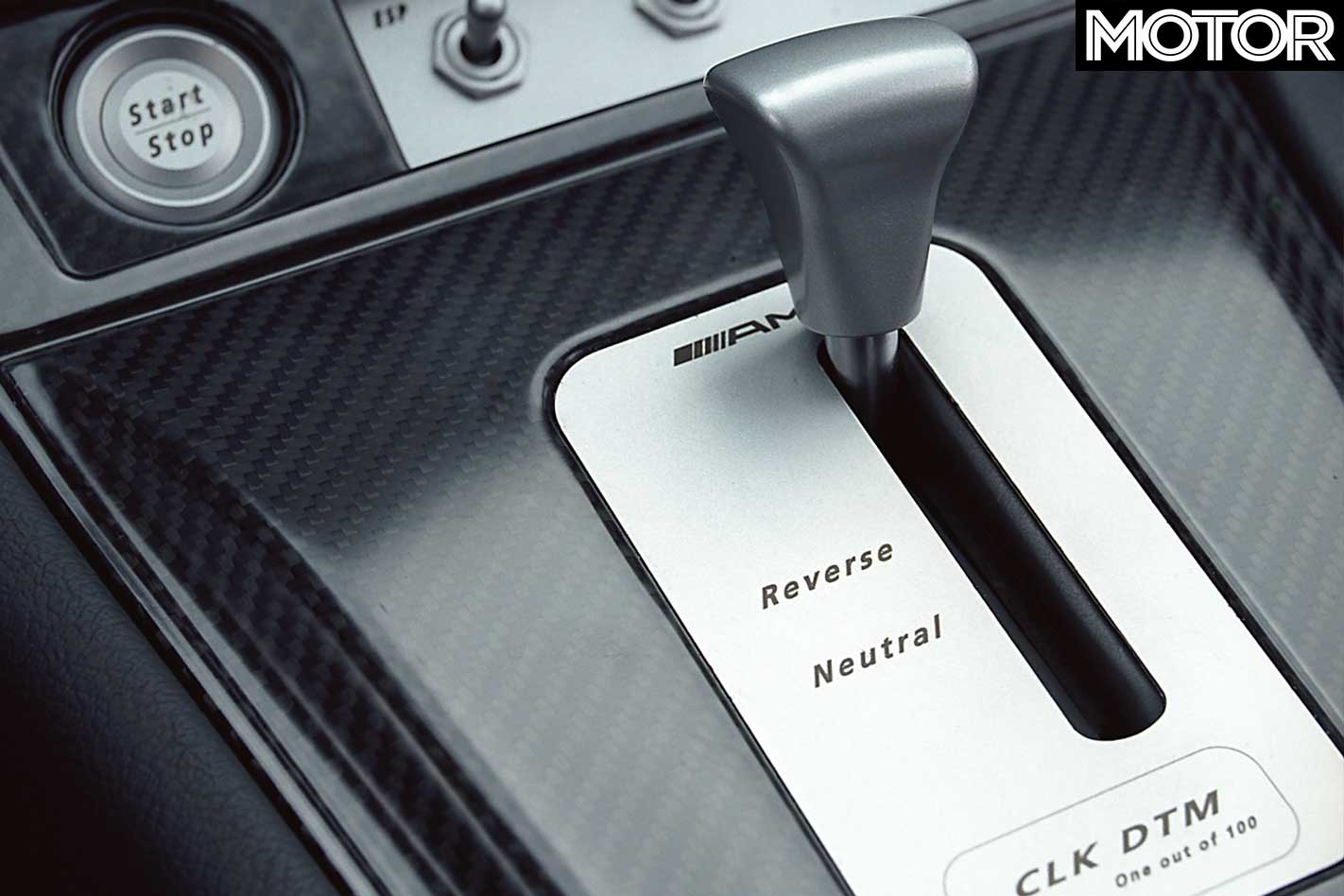
Our road book has five chapters, covering: Germany, Austria, Switzerland, Liechtenstein, Italy and back to Austria and Germany. To visit all five countires is a distance of 1173 kilometres.
In theory, German autobahns are the ideal playground for the fast and the furious. But in reality, nobody expects to be slurped up by a silver-something at an indicated 325km/h, least of all Dutch holiday makers and local van bandits.
Your best protection is to flash the xenons at them to warn of your sharpish approach. Should you need to bleed speed in a hurry, though, the cross-drilled, pizza-sized brake discs straddled by six-piston calipers at the front and four-piston calipers in the back aren’t bad. The rotors are made of steel, not carbon or ceramic, but the system nonetheless slows the car so vigorously that your cheeks, your eyeballs and your ears all point forward in the event of an emergency braking manoeuvre.
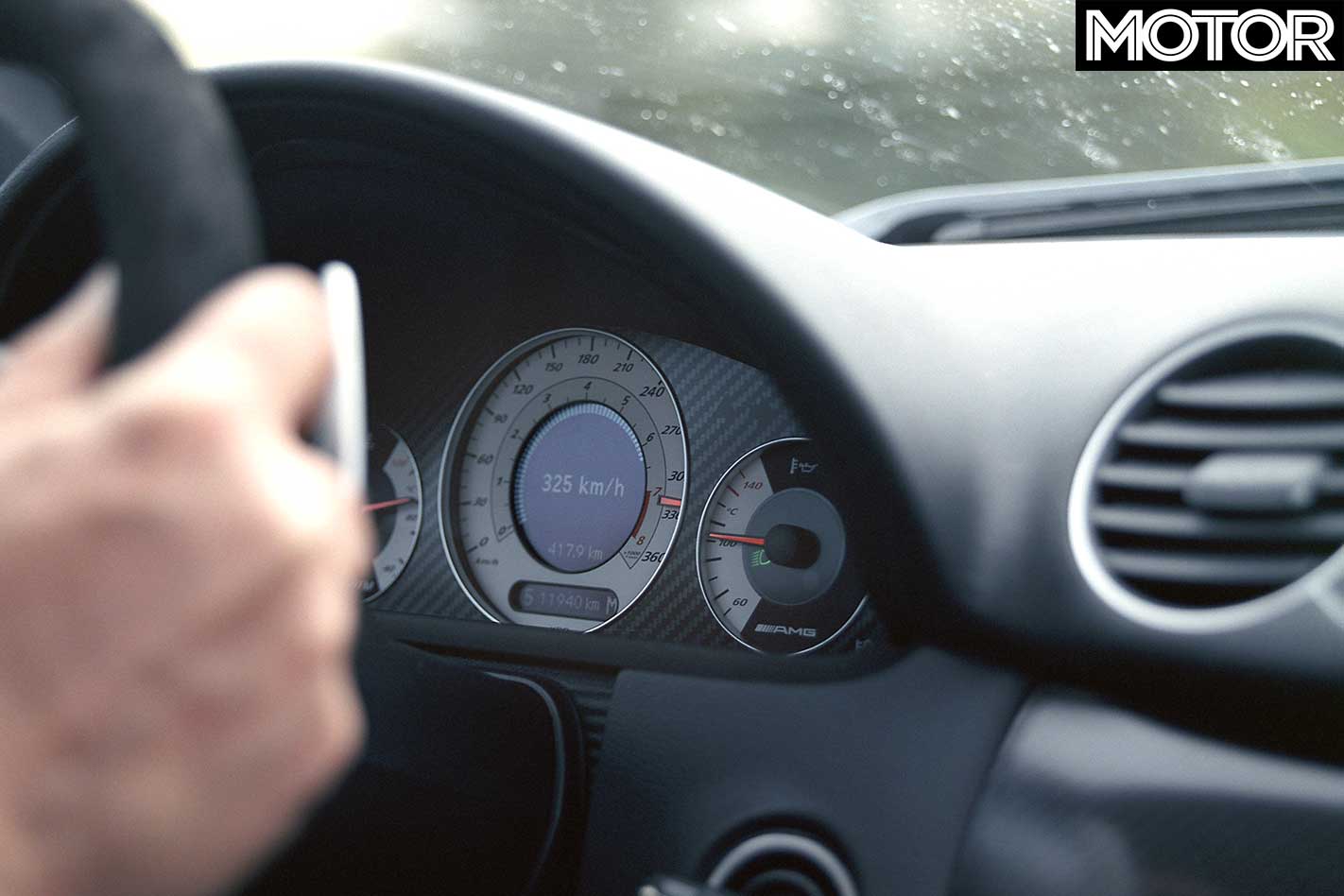
It is an extremely lively, extroverted and demanding piece of kit. First of all, it reminds you how essential it is to read the road. Avoid puddles, grooves and white lines. Beware of ridges, expansion joints, patchwork sections. Learn to feel the difference between concrete, tarmac and, worst of all, low-noise asphalt. Be prepared for crosswinds, for the slipstream of trucks and for the calm of tunnels. Most important, though, is to pace your inputs. The direct steering (only 1.7 turns from lock-to-lock) needs a firm grip, but it does not require frequent adjustments.
Although the tank behind our backs holds a comfortable 92 litres, the fuel warning light came on after only 330 kilometres. A dozen heartbeats later, the snarling noise of the auxiliary petrol pump forced us to make a detour to the nearest highway service station. The average consumption over the entire trip worked out at a fairly thirsty 24.4l/100km.
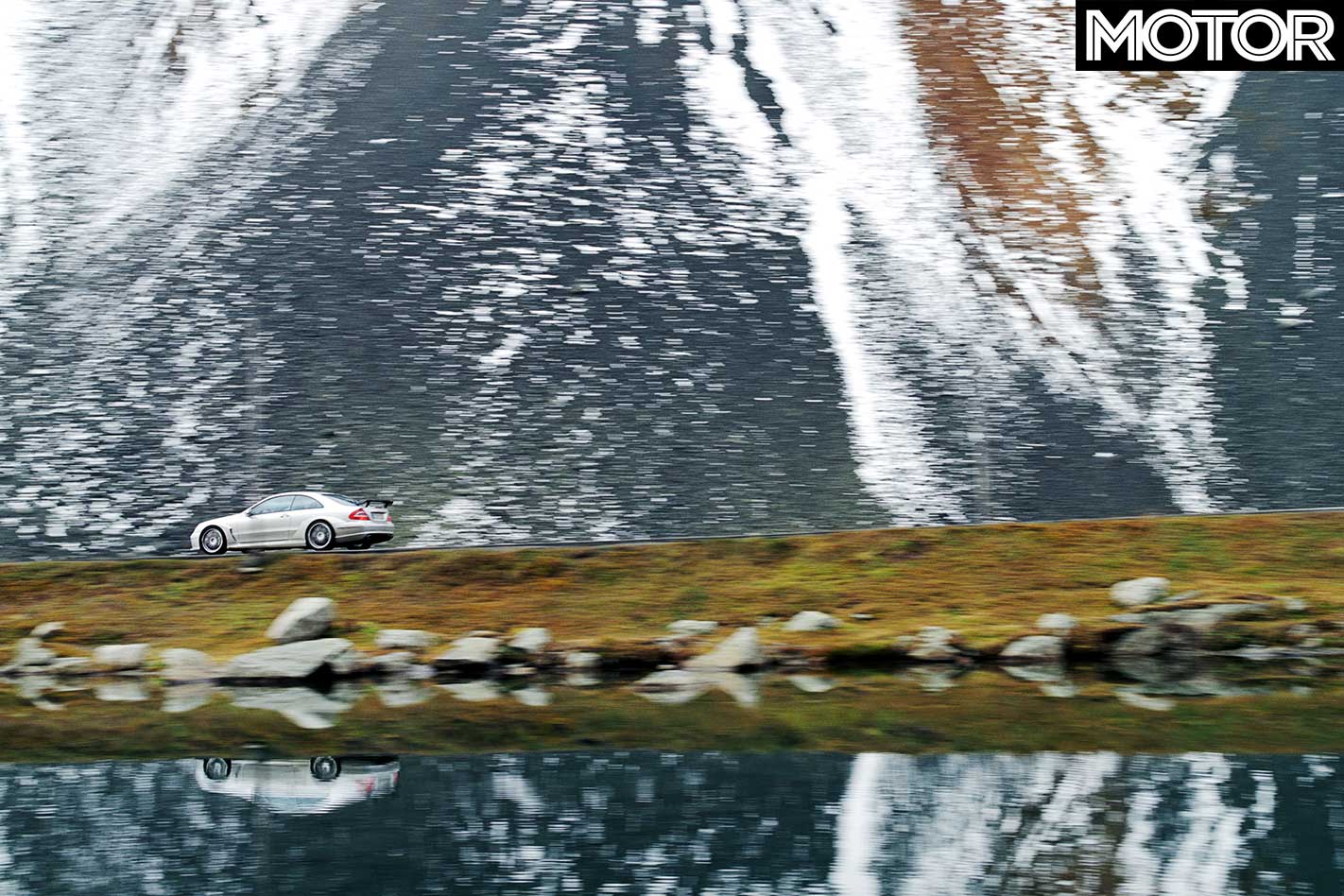
Despite the omission of rear seats, stacks of trim and almost all sound deadening materials, the CLK DTM AMG still weighs 1748kg, 100kg more than the CLK55. But unlike most of its supercar competitors, the winged Benz is a perfectly practical all-rounder with a roomy cabin and a useful boot.
We clipped a corner of Austria at Bregenz before entering Switzerland east of Lake Constance, then we headed for Liechtenstein, which is, even on the largest-scale map, about the size of a postage stamp. A famous tax haven, the capital of Vaduz harbours hundreds of letterbox companies, dozens of banks and one castle which looms large above this extremely rich microcosm.
From Liechtenstein we headed to Switzerland. Theoretically, the home of Toblerone chocolate, Emmenthal cheese and Rolex watches it could be the perfect stomping ground for our road racer, but in reality the local constabulary is deadly serious about their speed limits.
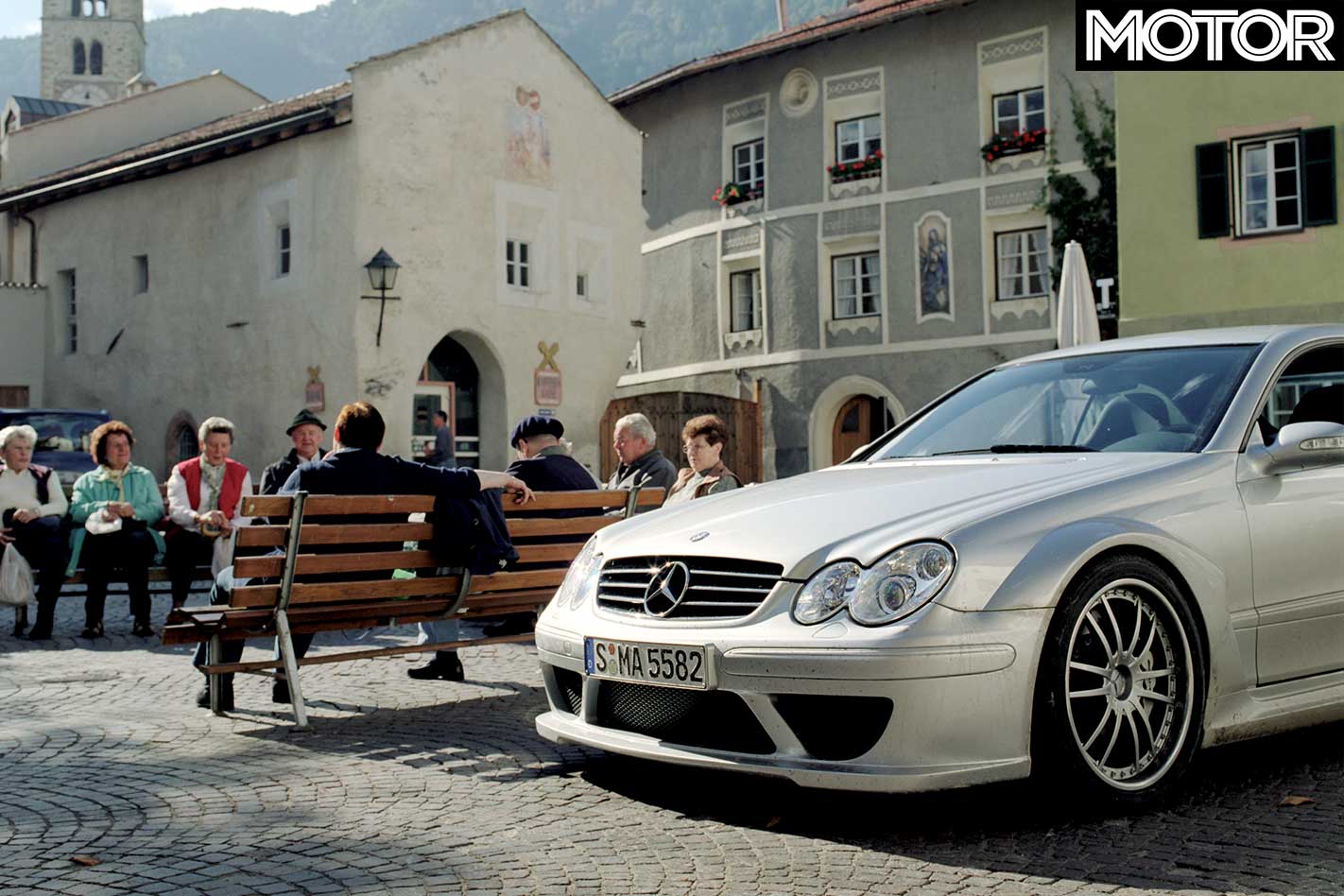
We spent the night in Davos, and the following morning made straight for six famous alpine passes: Flüela, Ofen, Umbrail, Stilfser, Joch and Reschen. It was a beautiful day and a truly memorable experience. The early impressions gathered on the autobahn were confirmed on the twisties – the CLK is an incredibly tactile driving instrument.
The one element which stands out in this high-tech automotive jigsaw is not the engine but the steering. It is immediate and translucent, precise and three-dimensional, intuitive and ideally weighted. The rack-and-pinion device is both receiver and transmitter, an accurate and reliable mediator between car and driver, as well as between moving object and the surface it travels on.
Its ultra-sharp calibration (the gearing is 15.5:1) not only allows you to aim at the apex, it also helps you to apply the right amount of opposite lock when needed – which is often. This is the only Mercedes passenger car I’ve driven which scores a big fat 10-out-of-10 for its steering.
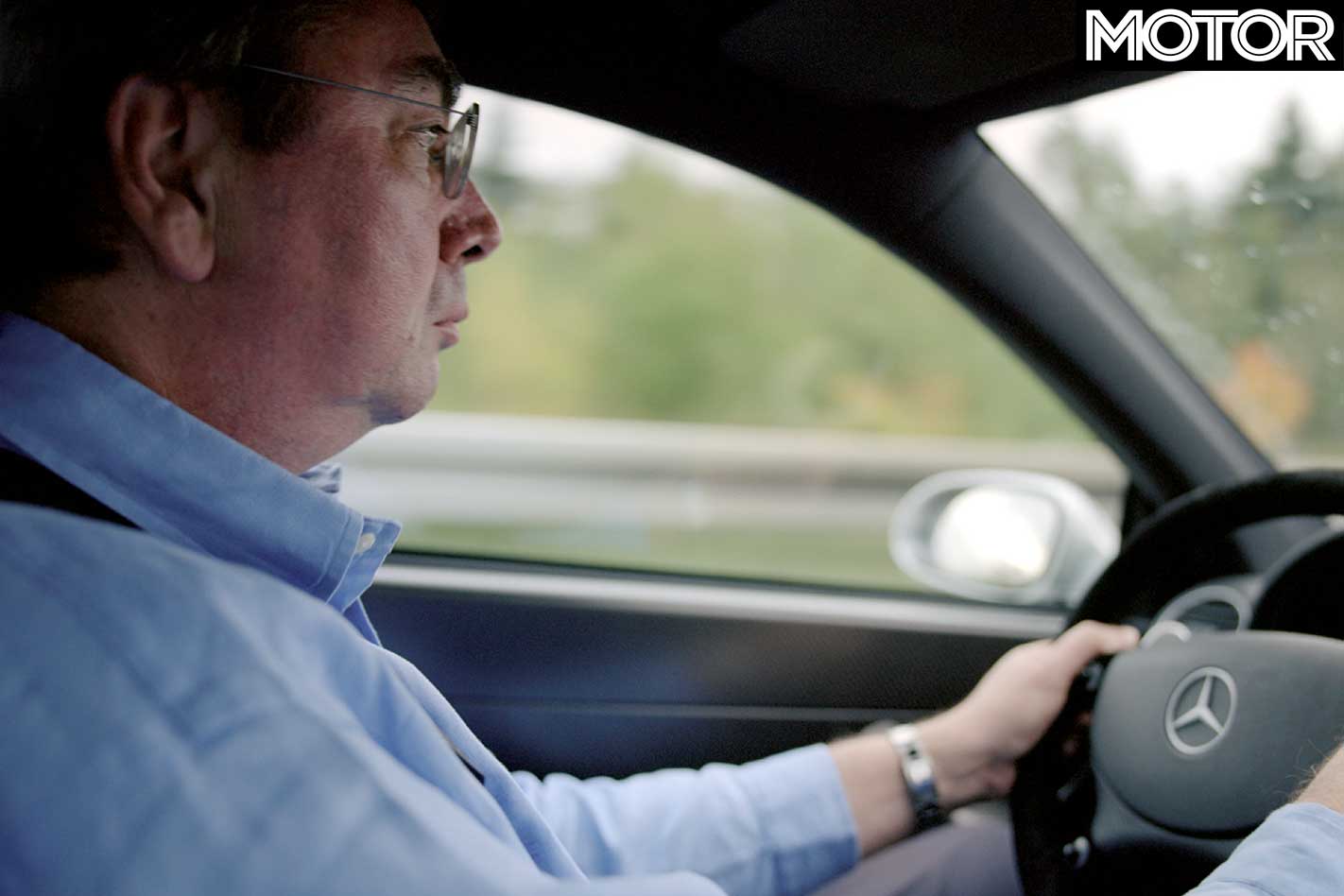
The supercharged 5.4-litre V8 is an evolution of the SL55 unit. It features hotter camshafts, a free-flow intake and exhaust manifolds, lightweight forged pistons and a higher-revving Kompressor which produces a maximum boost pressure of 0.85bar. The tweaked engine is good for 428kW at 6100rpm and 800Nm at 3500rpm.
If the conditions are right, it will accelerate the silver arrow from 0-100km/h in 3.9 seconds and from 0-200km/h in 10.9. If the conditions are less than perfect, the nose-heavy weight distribution (54:46), the extreme tyres (Dunlop SP SuperSport) and the all-or-nothing limited-slip differential struggle to convert all that torque into traction and action.
The transmission is conveniently spaced in the lower gears, too. First takes you to 72km/h, second stretches to 120km/h, and third knocks on the 193km/h mark. All that’s missing, compared to a sequential shift transmission is the entertaining heel-and-toe blip during downshifts.
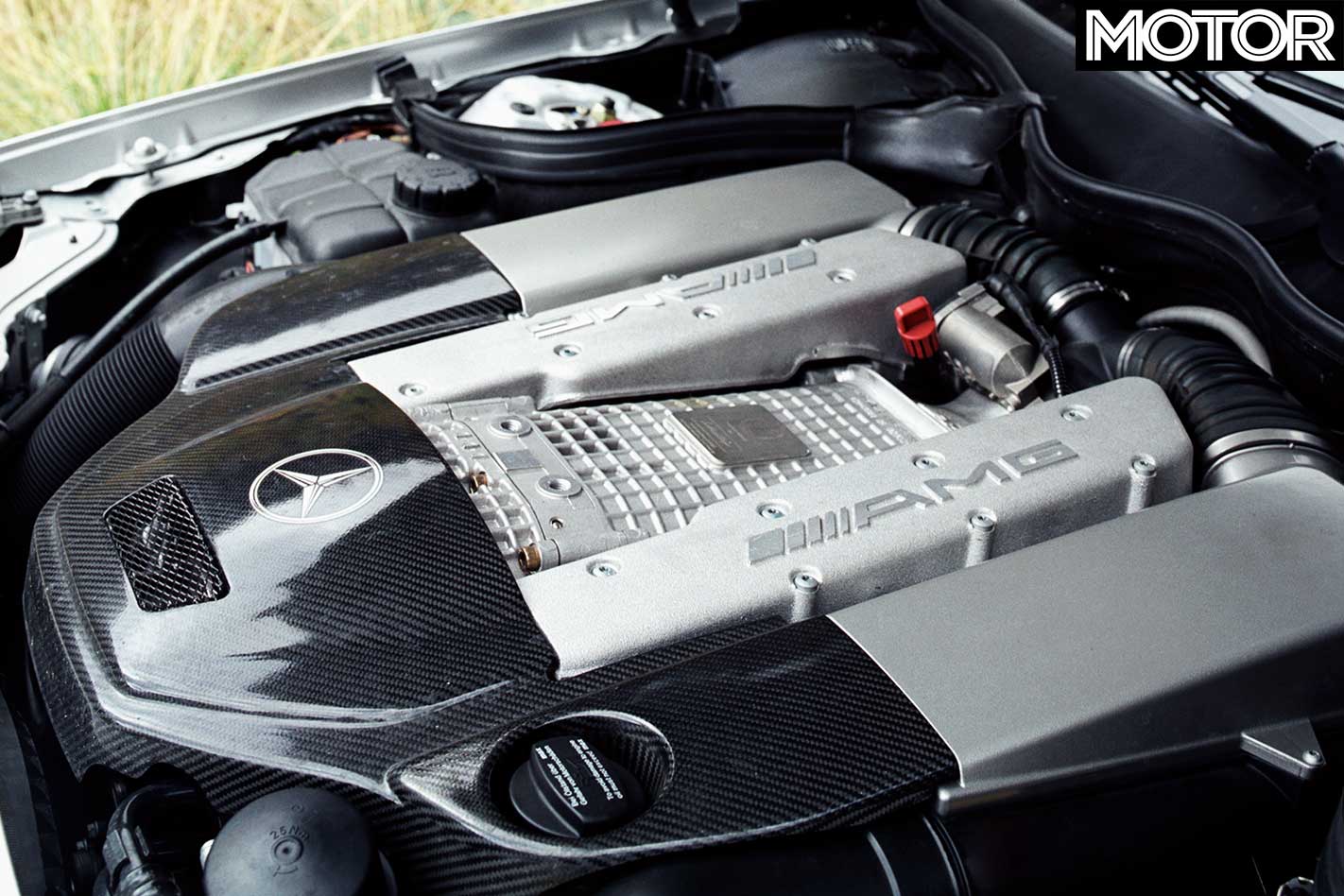
Even with ESP active, the Affalterbach road rocket is always on its toes. It wags its tail fin as soon as it smells the proximity of a corner, and habitually struggles for grip as it scans the bend for the exit, it may even put in a second- or third-gear zig-zag on an undulating piece of straight tarmac. In cold and wet weather, the transition from stick to unstuck is about as subtle as a guillotine, but at least it’s always the rear end which lets go first.
Thanks to its limited wheel travel, stiff, height-adjustable sports suspension and the extra-wide footwear, the Merc struggles for directional stability on the knobbly tarmac the Swiss, Italian and Austrian mountains are paved with. And thanks to the metal universal joints, which replaced the more compliant rubber mounts on both axles, you know at all times exactly what is going on beneath the seat of your pants and through your fingers.
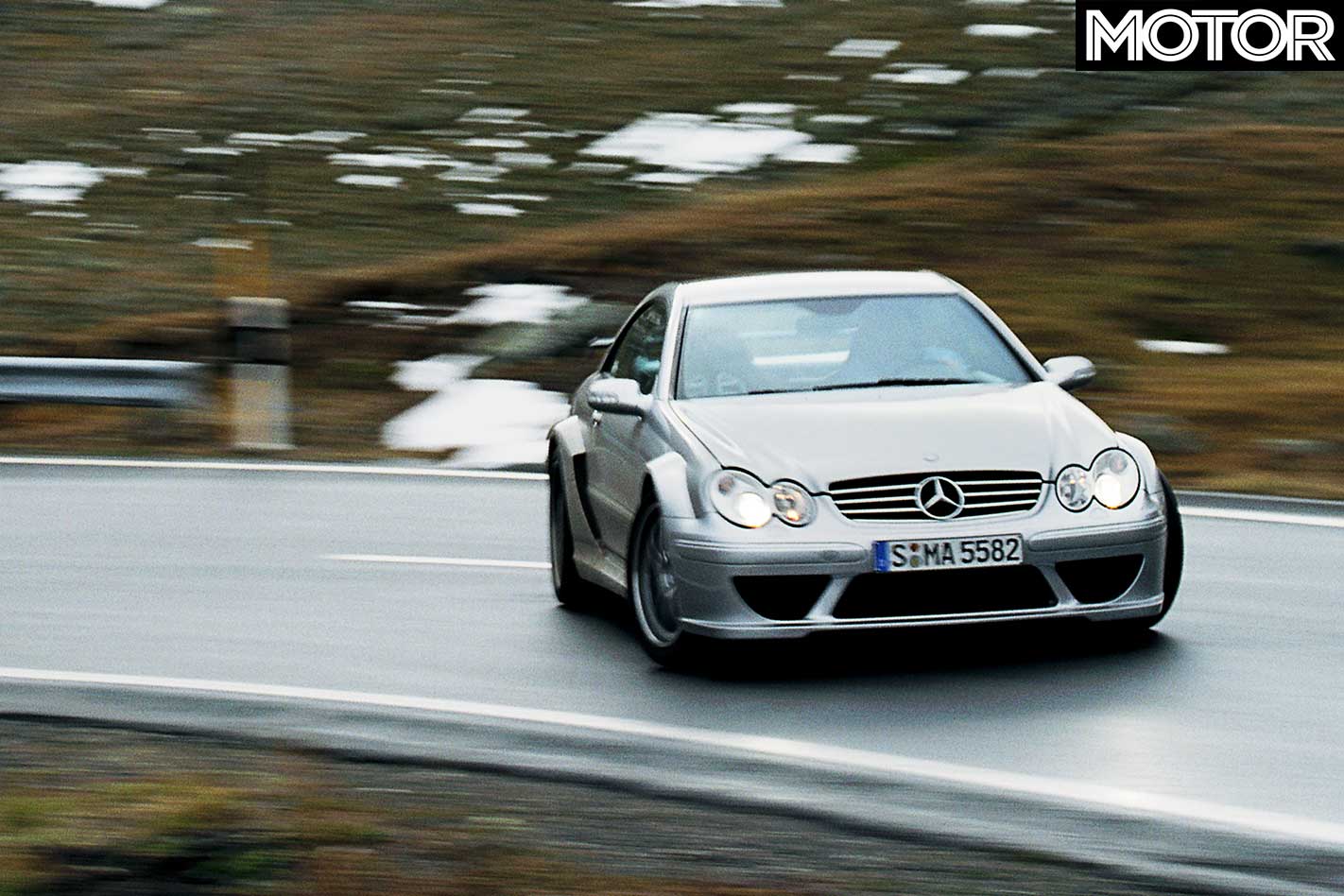
The loud Benz might have gone close to permanently etching a grin on my face, but it’s not free from little niggles. There was, for instance, absolutely no reason to fit an ovoid steering wheel, there was no need to go for fake air intakes like those in front of the rear wheels, and there was really no need to curb the maximum speed to 320km/h when the tyres are safe at least up to 345km/h.
But the latter measure is of course a delicate political one, because the 428kW CLK is not supposed to outperform the 460kW SLR, which costs almost twice as much. And yet it does – because the AMG car has more responsive brakes, better steering, a sportier engine and a less compromised chassis.
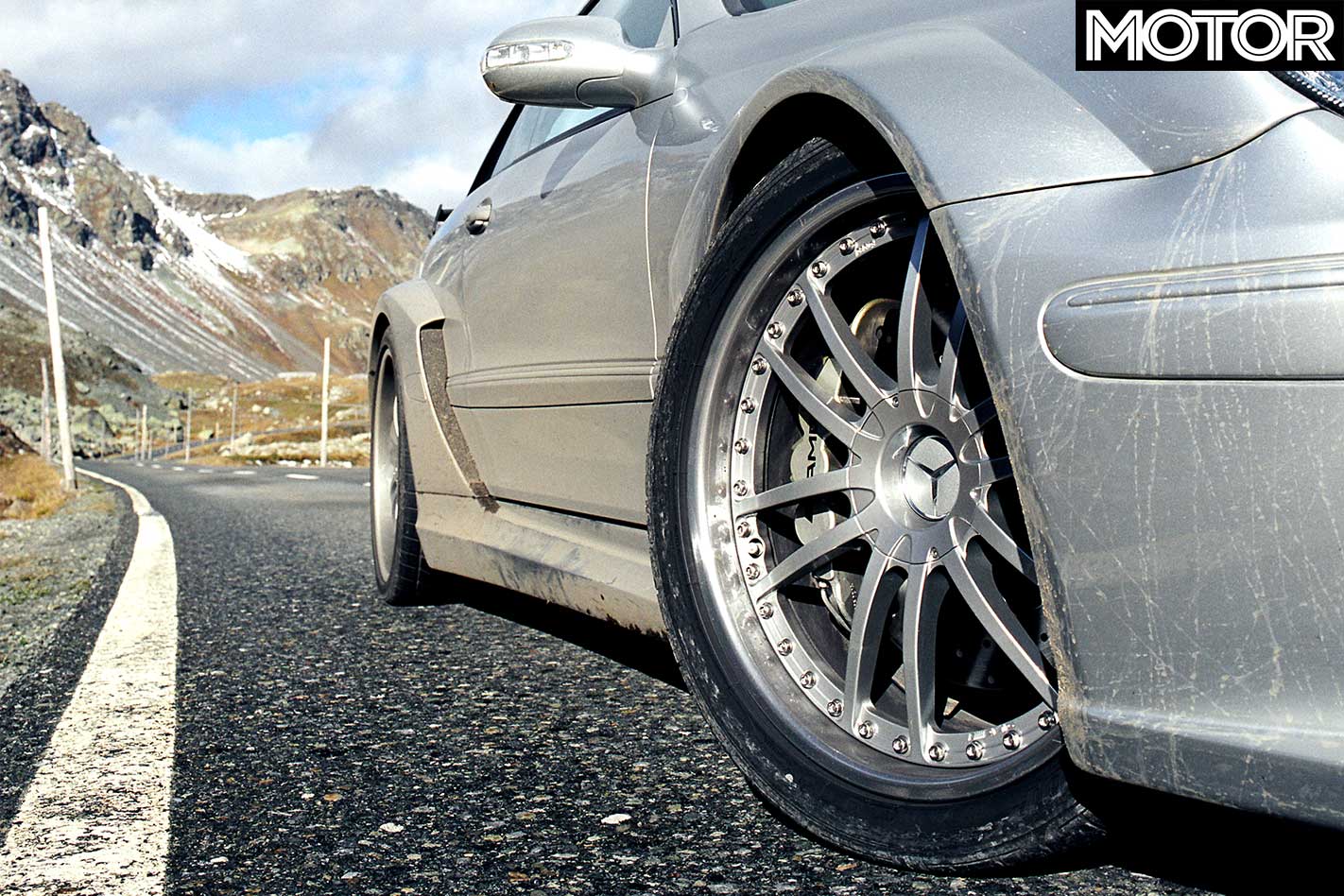
On the way back to Stuttgart, the rain returned, and I made a mental note to slow down. That requires a fair dose of self-discipline when the road ahead is clear and you’ve got 3000 more revs to exploit in fifth gear. Over the Swabian Alb, the clouds finally cleared, and once again we went through the spine-tingling motions as the Benz zigged and zagged its way along.
But then, with Untertürkheim just around the corner, and the Merc’s fuel gauge showing empty, for the fourth time in 24 hours, we pulled into the nearest petrol station. Then began the task of getting out of the car: peel off the belt, wriggle out of the cockpit, sort out the crown jewels, straighten the back and fire up the circulation.
For most people, the CLK DTM AMG is simply too much car, but I would do almost anything to hit the repeat button for this tour-de-force. And I can pretty much guarantee that next time the car won’t be returned before I have used up all of my driving licence vouchers.
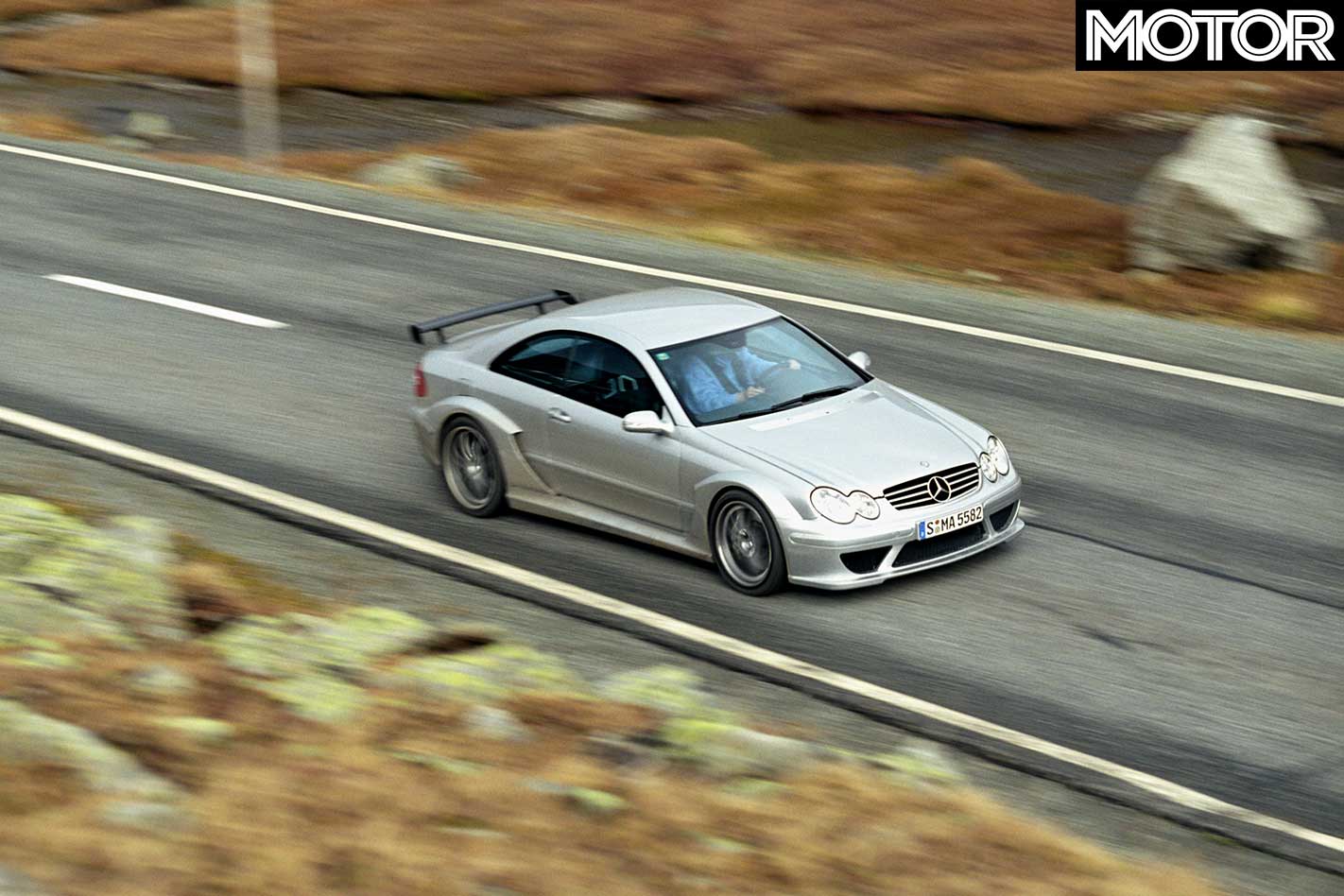
FAST FACTS 2005 Mercedes-Benz CLK DTM AMG
ENGINE: front-mounted, supercharged 5.4-litre, SOHC, 24-valve, V8 POWER: 428kW @ 6000rpm TORQUE: 800Nm @ 3500rpm COMPRESSION RATIO: 10.5:1 BORE X STROKE: 97.0mm x 92.0mm WEIGHT: 1748kg POWER-to-WEIGHT: 245kW/tonne SPECIFIC POWER: 79.3kW/litre 0-100KM/H: 6.73sec (tested) 0-400M: 14.74 @ 160.8km/h (tested) TRANSMISSION: five-speed automatic SUSPENSION: MacPherson struts, adjustable coil springs and gas-filled shocks (f); multi-link, adjustable coil springs (r), anti-roll bars (f & r) L/W/H: 4650/1800/1360mm WHEELBASE: 2722mm TRACK: 1569mm (f); 1580mm (r) FUEL: 62 litres and a 30 litre auxiliary tank, PULP BRAKES: 360mm ventilated discs, six-piston calipers (f); 330mm ventilated discs, four-piston calipers (r), ABS WHEELS: 19 x 9.0-inch (f ); 20 x 10-inch (r), alloy TYRES: Dunlop Super Sport Race, 255/35 R19 (f ); 285/30 R20 (r) PRICE: $700,000 (est)
German-style Tin Tops Mercedes and AMG dominate DTM
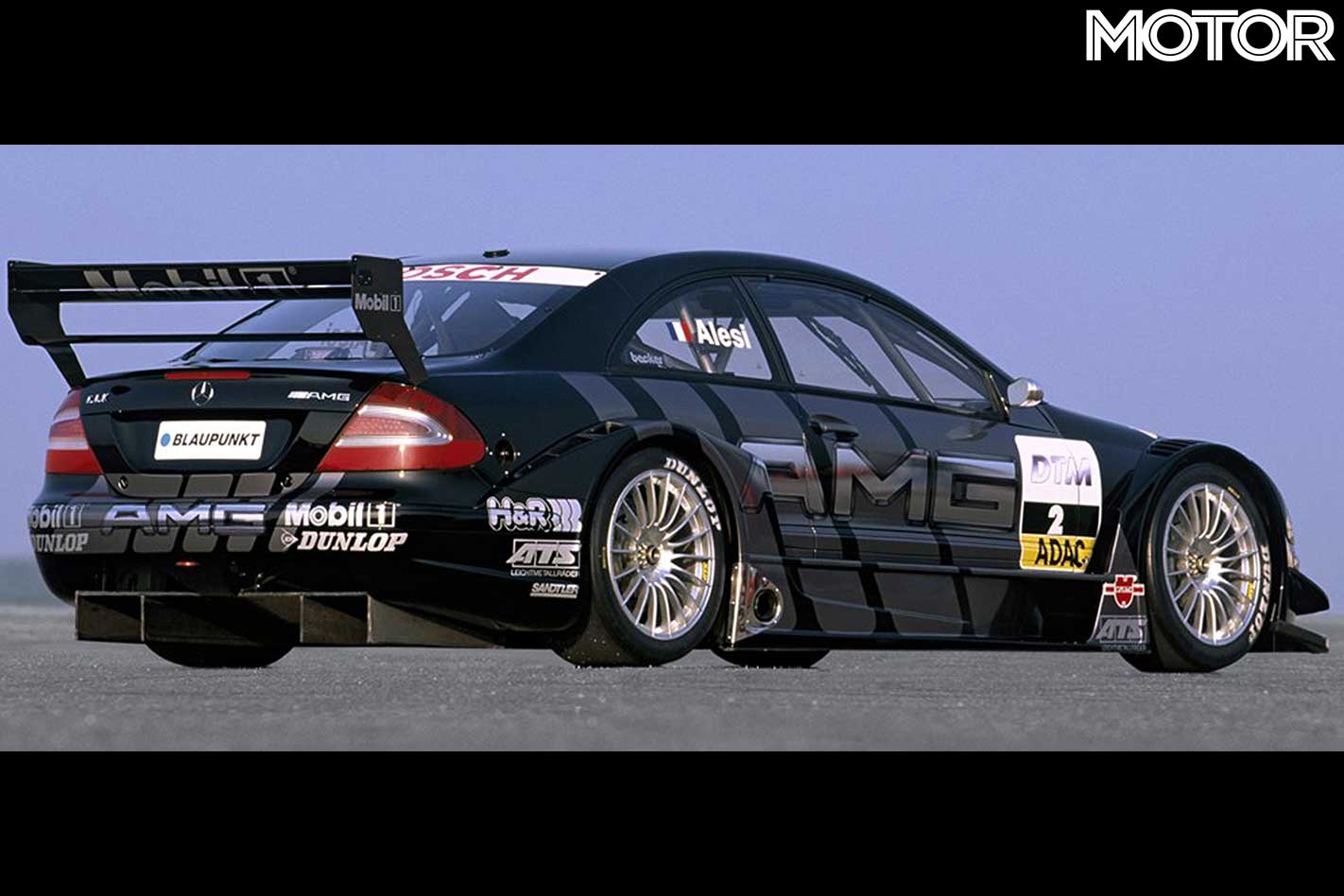
The Deutsche Touring Car Masters (DTM) is considered by Autosport Magazine to be the world’s best touring car series, (a recent poll placed it just ahead of our very own V8 Supercars series). DTM kicked off in 1984, and ran parallel to the International Touring Car Series (ITC) in which Mercedes and AMG also competed.
However, unlike V8 Supercars, which is a semi-production-based race series, DTM is a silhouette-based racing series, in that only the body shell resembles the donor vehicle – a bit like NASCAR in the States. For example, front-drive road cars suddenly become rear-drive DTM racers.
Mercedes-Benz and AMG have dominated DTM since its inception in 1984. Indeed, between 1986 and 1996, Mercedes-Benz became the most successful brand in DTM/ITC history, first with the 190E and then the C-Class. It chalked up more than 84 victories, four driver’s championship titles, five manufacturers’ titles and 10 runner-up positions in the manufacturers’ rankings. Sticking with the C-Class for racing duties, the CLK AMG is proving to be just as dominant on the track as its predecessor was.
In fact, former Formula One ace, Jean Alesi, who signed with Mercedes AMG after retiring from single seaters, successfully piloted his CLK AMG to a podium finish in his first race in 2002, finishing fifth overall at the series’ end.
In 2003 he mirrored his ’02 result, finishing fifth again. He went on to finish the 2004 series in seventh place.

